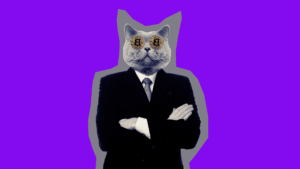- NFTs are rapidly changing the landscape of art and entertainment; but the new phenomenon has attracted the attention of fraudsters; who are using it to commit crimes such as art theft and identity theft.
- Copyright regulations; document storage, forgery concerns, a high carbon footprint; expensive taxes, and ownership defaults are among the other challenges, according to BuyUCoin CEO Shivam Thakral.
- A single Ether transaction — minting, bidding; canceling, sales, and transfer of ownership – generates the same amount of carbon as 13,000 hours of YouTube watching.
NFTs are rapidly changing the landscape of art and; entertainment by making it easier again ever for fans to support their favorite creators and; for artists to mint and trade unique; collectible pieces. As more and more celebrities jump on board; NFTs are quickly changing the landscape of art and; entertainment by making it easier again ever for fans to support their favorite creators and; for artists to mint and trade unique; collectible pieces.
With superstars like Amitabh Bachchan and Sunny Leone joining the fray; NFTs are steadily gaining traction; and the rising interest necessitates a deeper dig and greater insights for all stakeholders – artists, businesses, investors, and individuals.
NFTs are blockchain files whose ownership can be traced via the Ethereum blockchain. The concept gained traction during the inaugural NFT artwork auction in March 2021; when Indian-origin crypto entrepreneur Vignesh Sundaresan (aka Metakovan) paid $69.3 million for “Everyday: The First 5000 Days;” a digital collage of 5,000 photographs by artist Mike Winkelmann (aka Beeple). Unlike previous auctions, bidding was conducted in Ether, a cryptocurrency.
A String Of Concerns
Melvin Thambi, an NFT artist and cofounder of NFTMalayali; stated during The Crypto Summit; hosted by Inc42 about the NFT Marketplaces (a place where users can buy and sell NFTs); that the NFT phenomenon has helped him connect with other artists around the world much faster than Facebook-owned Instagram; which only resulted in likes.
However, as interest in NFTs has grown; reports have emerged that the new phenomenon has piqued the curiosity of fraudsters, who are posting phoney artwork.
How do NFT Marketplaces verify; that users are not manipulating transactions by trading among themselves (wash trading) in order; to raise the value of the NFT? How can consumers be certain that the NFT; they have purchased is the same rare item that the seller has promised? Yet, how do artists ensure that their artwork is not replicated or their identities are not stolen in NFT marketplaces?
As an example; in the NFT’s marketplace Rarible; a confirmed profile of artist Derek Laufman; author of the comic book RuinWorld, BOT-9, and designer of Marvel’s Super Hero Adventures, was discovered to be false.
This is 100% NOT me. I thought the point of NFT was that the artwork and artists needed to be verified? Apparently super easy to scam people. What a joke that platform is. https://t.co/FrBy4zuhQy
— Derek Laufman (@laufman) March13 2021
Despite the fact that each NFT is unique; forgeries and even artist identity theft are unavoidable due to their digital nature.
In another case; scammers became interested in (and took advantage of) the work of popular artist Qing Han (aka Qinni); who died of cancer. In April 2021; little than a year after her death; her brother’s friend claimed that five accounts were hijacking his sister’s identity in order to sell NFTs of her artwork.
But like most emerging technologies, it was the tip of the iceberg. Talking about bottlenecks in NFT marketplaces in India, BuyUCoin CEO Shivam Thakral states; “Some of the major challenges are copyright rules, document storage, forgery issues, high carbon footprint, high taxes, and ownership defaults.”
“Artwork like Leonardo Da Vinci’s painting Monalisa has been in existence for centuries. We need to find a way to ensure similar existence of digital artworks in the form of NFTs,” he added.
When NFT-policing startup bitsCrunch raised $750K in its seed round; its founder Vijay Pravin Maharajan told Inc42 that the NFT’s ecosystem faces a number of challenges; including forgeries, wash-trading (trading within personal networks to enable higher rewards and prices), and inefficient asset valuation.
The Environment At Stake
Not only on a personal level but also on an environmental level; putting digital art on a blockchain ledger is, to put it mildly, terrible. For example; Beeple’s $69 million in digital art is accountable for more carbon emissions into the atmosphere than most small countries!
According to reports; Ethereum consumes around 44.94 terawatt-hours of electrical energy each year; which is similar to the annual power usage of countries such as Columbia. It is also responsible for around 34.58 metric tonnes of CO2 emissions each year; which is comparable to Denmark’s carbon impact.
A single Ether transaction — minting, bidding; canceling; sales; and transfer of ownership — generates the same amount of CO2 as watching YouTube for 13,000 hours; and consumes enough electricity to power a house in a developed country for 6 days!
There have been 87K+ NFT transactions worth approximately $225 Mn in the previous seven days (September 19-September 25); think how much electricity has been consumed and how much carbon has been dumped into the atmosphere!
In response to the concerns; Elon Musk, although declaring in March 2021 that Tesla will accept Bitcoin as a form of payment for electric vehicles; canceled the initiative in May 20221, citing climate change as the primary reason for the company’s decision. NFTs are traded using Bitcoins and other cryptocurrencies.
Seeking Sustainable Options For The Environment
“Major industries in the world are working towards reducing their carbon footprint. The use of renewable energy to power the NFT industry seems like a perfect solution to environmental issues,” claims Thakral. “We are actively working to explore the use of nuclear power, wind power, hydroelectric energy; or any other form of renewable energy to power its NFT business; which will significantly reduce the impact on the environment.”
On a similar note, OKEx chief executive officer, Jay Hao stated, “After the industrial revolution; industries that were the major growth engines of the world faced some criticism from environmentalists. They have now maintained sustainability and reduced carbon footprint as an integral part of their long-term business strategy.”
“Similar to that, we [NFT platforms] are aggressively working towards making NFT marketplaces environment-friendly by exploring the use of renewable energy to power NFT-related business,” Hao added.
“The energy issue primarily exists with the ‘Proof of Work’ algorithm; used by Bitcoin and temporarily by Ethereum, states Gartner analyst Avivah Litan. “Tezos is much more preferable to users because it is energy-efficient. It uses a form of Proof of Stake for its consensus algorithm and; Ethereum is upgrading its network to the algorithm.”
Need For Regulatory Intervention
The only thing that distinguishes a genuine NFT from a forgery is the token that comes with it. However, everything may be tokenized on the blockchain and a unique record produced. It is simple to produce and manipulate an NFT, as well as the token that comes with it.
Due to the market’s decentralization, it is difficult to trace fraud in marketplaces. As a result; platforms such as bitsCrunch must collaborate to provide a policing service; that allows purchasers to be safe while ensuring that a centralized ecosystem is able to govern the digital market.
Iterating the idea of government regulation, Thakral adds; “There is an urgent need to create a positive regulatory framework to enable the growth of NFT marketplaces in India. NFT marketplaces will need to deploy eco-friendly mining so that their existence does not harm the environment.”
“Tax exemption could be another way to boost the growth of the NFT market in India. The presence of well thought and dynamic policies and governance protocols around the technology would protect early adopters. The artist rights organizations need to accept the NFT ownership models which will open up the marketplace for the masses;” he said.
What Can Organisations Do?
Litan emphasizes the threat of NFT use; and ownership in a research note given with Inc42 by Gartner; particularly by artists and purchasers who are unfamiliar with how to mint NFTs.
She states that organizations can:
Make use of distributed storage technologies that allow for persistent storage and secure integration with blockchain networks.
Use escrow services for non-financial transactions.
Purchase owner insurance to protect against the loss or destruction of NFT objects/files.
Engage custodial services to secure the long-term preservation of NFT objects/files.
A distributed file system (DFS), such as InterPlanetary File System, should be used for NFT file and object storage (IPFS). Nodes; should be replicated over several servers to ensure system tolerance in the event of the disappearance of a single (or even a few); node containing the NFT file/object.
Collaboration with blockchain analytics businesses like Chainalysis; CipherTrace; CoinMetrics; bitsCrunch, and Elliptic, among others, is another approach for organizations to keep track of NFT transactions and maintain moral hygiene.
Personal Resilience And Education Should Be Top NFT Trading Priority
“A revolutionary technology like Blockchain needs to be properly studied and understood by experts. It’s important to educate everyone around us far that genuine users are not manipulated by fraud and scam sites. We feel education about this new tech is of paramount importance along with clarity on the regulatory framework,” states Hao.
Further; Litan states, “Buyers cannot assume that NFTs are legitimate just because they are cryptographically secured on a blockchain. There are already reports of “sleepminting” attacks — proven to work; at least theoretically — whereby NFTs are minted to a well-known user/artist wallet; and then transferred to a hacker’s wallet without triggering any of the typical smart-contract security checks.”
Source: Inc42













